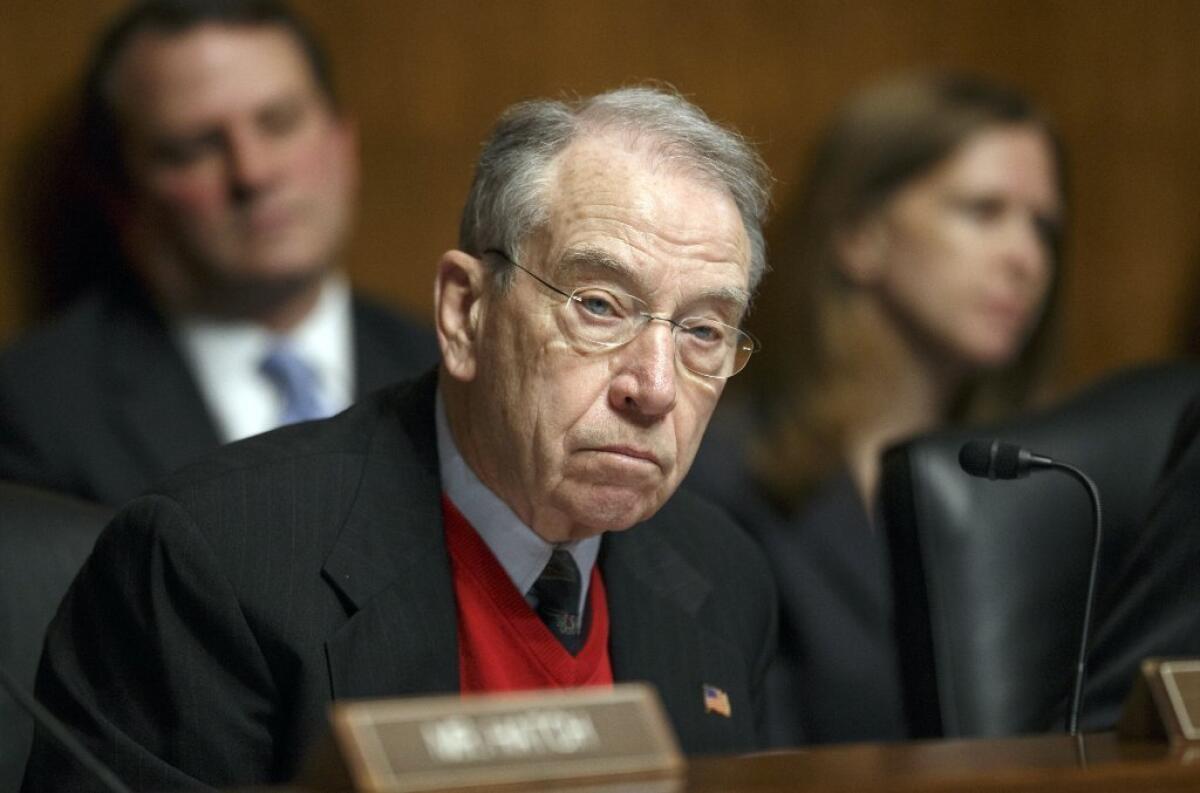Government reveals $3.5 billion in industry ties to doctors, hospitals

- Share via
Opening the book on long-hidden industry relationships, the federal government revealed nearly $3.5 billion worth of payments and other ties that U.S. doctors and teaching hospitals have with drug and medical-device companies.
These financial details, published Tuesday under a requirement in the federal health law, have been sought for years by patient advocates and lawmakers from both political parties concerned about conflicts of interest in the medical profession.
Initially, the new federal website includes 4.4 million payments made during the last five months of 2013. More data will be published next summer.
Officials said the data cover financial transactions involving about 546,000 physicians and 1,360 teaching hospitals across the country.
Consumer advocates hope the increased disclosure will ultimately help curb unethical practices by some doctors who prescribe medications and devices after receiving large sums from manufacturers, possibly putting patient care at risk.
Physicians and academic medical centers defend industry collaboration as essential to advance research into life-saving treatments. They have also questioned the accuracy of the government data.
The Physician Payments Sunshine Act was included in the Affordable Care Act that President Obama signed in 2010 amid growing demands for more openness in the U.S. healthcare system, which historically has shielded doctors, hospitals and other medical providers from much public scrutiny.
“The Sunshine Act is a watershed moment,” said Susan Chimonas, associate director of research at Columbia University’s Center on Medicine as a Profession. “It’s a tantalizing first look at what kind of industry ties doctors have.”
In the last several years, the Obama administration has published data on how much hospitals charge for medical procedures and how much the massive federal Medicare program pays individual physicians.
At the same time, hospitals, nursing homes and others are being required to report an increasing number of quality measures to the federal government, which posts the data on a public website.
These industry payments have long been a target for patient advocates concerned about the huge sums companies expend to woo physicians with speaking fees, luxury trips and meals.
“It’s a widespread practice that does influence the kind of care patients get,” said Lisa McGiffert, manager of Consumers Union’s Safe Patient Project in San Francisco. “This exposure will require everybody to talk about something that’s been underground.”
In one national survey, nearly 30% of doctors said they received money for consulting, giving lectures or enrolling patients in clinical trials.
Medical groups have cautioned that the data on payments risk jeopardizing crucial collaborations that have helped foster medical breakthroughs that benefit patients.
“If the information made available to the public involves dollar amounts without full context, it can lead to gotcha-style news stories and healthcare providers facing the presumption of ethical wrongdoing even when they have done nothing wrong and their work is benefiting patients,” said Mary Grealy, president of the Healthcare Leadership Council, an association of medical industry leaders.
Major medical societies, including the American Medical Assn., have expressed concerns about the increased disclosures about physicians, often complaining that the data are not always correct.
In advance of the release of the new payment data, medical groups renewed their complaints that physicians had not been given adequate opportunity to review the information before it was published.
Dr. Shantanu Agrawal, a deputy administrator at the Centers for Medicare & Medicaid Services, said the new database “does not identify which financial relationships are beneficial and which could cause conflicts of interest. It simply makes the data available to the public.”
The government website details a wide range of payments and financial information, from consulting fees, meals and travel expenses to physician ownership stakes in medical companies.
But the Obama administration said about 40% of the records published Tuesday don’t include physician names because officials are still working to confirm the accuracy of the payouts. An additional 199,000 records are being withheld for now because they are either exempt from the reporting requirement or under dispute, federal officials said.
The law requires medical companies to report payments and gifts to physicians that exceed $10.
U.S. Sen. Charles E. Grassley (R-Iowa) authored the Sunshine Act after numerous investigations into conflicts of interest among physicians. He said the rollout may be rocky but the data will eventually become a valuable resource for consumers, insurers and taxpayers.
“It should empower consumers to learn whether their doctors take payments and if so, why and whether that matters to them,” Grassley said.
Twitter: @chadterhune @noamlevey
More to Read
Inside the business of entertainment
The Wide Shot brings you news, analysis and insights on everything from streaming wars to production — and what it all means for the future.
You may occasionally receive promotional content from the Los Angeles Times.












